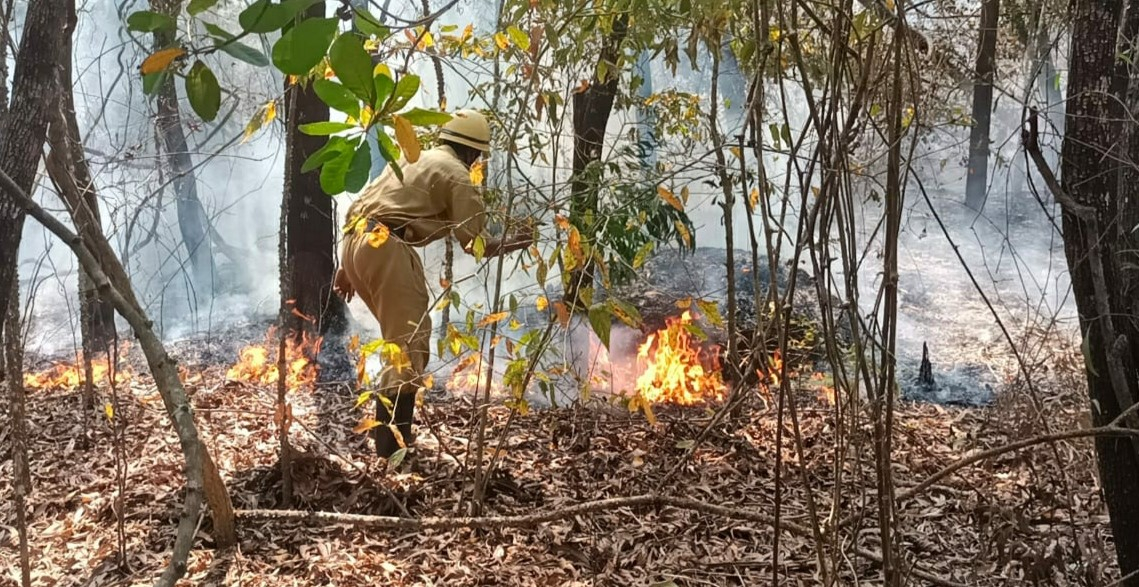It’s presumable that Anthropogenic factors often contribute to ignition of fires on account of strain human occupation places upon environment

With the last two weeks having witnessed a plethora of independently ignited wildfires in the vicinity of environmental hotspots, the evidence of these fires having been sparked autonomously seems like a circumstantial assumption at best.
While there is force in the argument that the direction of the wind could be instrumental in determining the extent of the wildfire spreading, the ignition of the fire itself would in all probability involve the impetus of a human element whether through inadvertence or even intentionally.
The most relevant concepts pertaining to the legal treatment of the acts leading to the fires would need elucidation:-
Important Definitions:
The Legal Lexicon has defined ‘Arson’ as a crime of intentionally and maliciously setting fire to buildings, wildland areas, abandoned homes, vehicles or other property with the intention of causing damage.
‘Pyrophilia’ is a relatively uncommon paraphilia in which a subject derives gratification from fire and fire-starting activity. Pyrophilia has been understood as a paraphilia in which gratification is derived from fire and fire-starting activity. A person who has an uncontrollable impulse to start fires is a person affected by ‘pyromania’.
The Merriam Webster Dictionary defines ‘Vandalism’ as willful or malicious destruction or defacement of public or private property. The term includes property damage, such as defacement directed towards any property without permission of the owner.
Indian Penal Code:
The Indian Penal Code, 1860 in Chapter XVII provides for Offences of Mischief wherein Sections 435 to 438 characterise mischief by the method adopted to cause wrongful loss or damage. These sections are together called offences of Arson.
Section 435:
The short title reads as “Mischief by fire or explosive substance with intent to cause damage to amount of one hundred or (in case of agricultural produce) ten rupees”.
Accordingly, section 435 covers those cases where the mischief has been committed by fire or any explosive substance with the intent to cause, or the knowledge that the act is likely to cause damage to any property.
This section would be applicable when the amount of damage incurred is in the realm of one hundred rupees or upwards or ten rupees or upwards when the “property” damaged is an agricultural produce.
This section prescribes imprisonment for a term of upto seven years, and also for fine. Incidentally, the offence under section 435 is cognizable, bailable, compoundable, and triable by a Magistrate of the first class.
Section 436:
The short title reads as: “Mischief by fire or explosive substance with intent to destroy the house, etc.”
Accordingly, section 436 also deals with the mischief committed by fire or any explosive substance, but specifically applies when the damage is caused to any building which can be a house, place of worship or as a human dwelling or as a place for the custody of property.
The punishment prescribed under this section may include life imprisonment for a term which may extend to ten years, and fine as the court may deem fit. The offence under this Section is cognizable, non-bailable, non-compoundable, and triable by the Court of Session.
Degree of Proof:
One of the essential requirements to establish an offence under Sections 435 and 436 is that there must be some irrefutable evidence that the accused actively set fire to the dwelling place or building or instigated someone to do it for him.
For instance – the Cell Tower Location of suspected persons obtained through Triangulation and thereafter seizure of the mobile phones of the mischievous persons suspected of the having committed the offence. Without complying with the directives for seizure of the evidence in the form of mobile devices of the suspected persons, the offence would not be made out against the accused and the framing of charge would be groundless.
Need for discretion before the Law:
While it is assuring that ‘Mischief’ in the IPC, takes up 15 sections, still however, it doesn’t include all possibilities of the crime itself.
The mention of the offence’s definition then followed by some scenarios in which ‘mischief’ would be punishable as a crime does not suffice the wide possibilities of acts that can be charged with mischief, due to which major cases involving any acts of mischief are often reported as being inconclusive after investigation and thereafter the courts of left bereft of evidence for establishment and punishment of the crime and yet the wheels of the criminal justice system remain turning for years without any concrete evidence.
Thus, it can be inferred that the crime of ‘mischief’ does not exert a very solid hold of the procedural law and would need to be detailed further. Otherwise, in case a person is due to be arraigned before a Magistrate for a crime he is accused of having committed and by and large if two views are equally possible and the Judge is satisfied that the evidence produced before him while giving rise to some suspicion but not grave suspicion against the accused, he will be fully justified to discharge the accused in exercising jurisdiction of the Code of Criminal Procedure.
While it is presumable that Anthropogenic factors often contribute to the ignition of these fires on account of the strain that human occupation places upon the natural environment in the race for urbanisation, a 2016 Judgment of the National Green Tribunal (NGT) on 22.12.2016 has imposed a complete ban on burning of waste in open places and announced a fine of Rs. 25,000 on each incident of bulk waste burning.
A bench headed by NGT Chairperson Justice Swatanter Kumar had observed that “…there shall be complete prohibition on open burning of waste on lands, including at landfill sites.”
“For each such incident, violators, including project proponent, concessionaire, any person or body responsible for such burning, shall be liable to pay environmental compensation of Rs. 5,000 in case of simple burning, while Rs. 25,000 in case of bulk waste burning.”